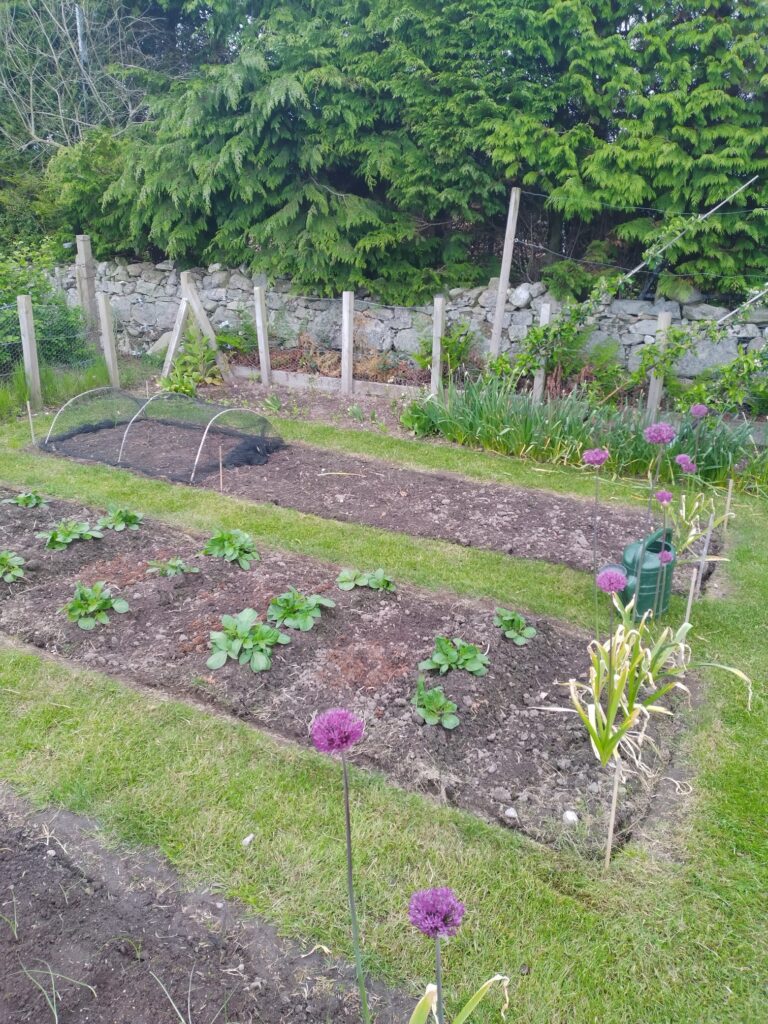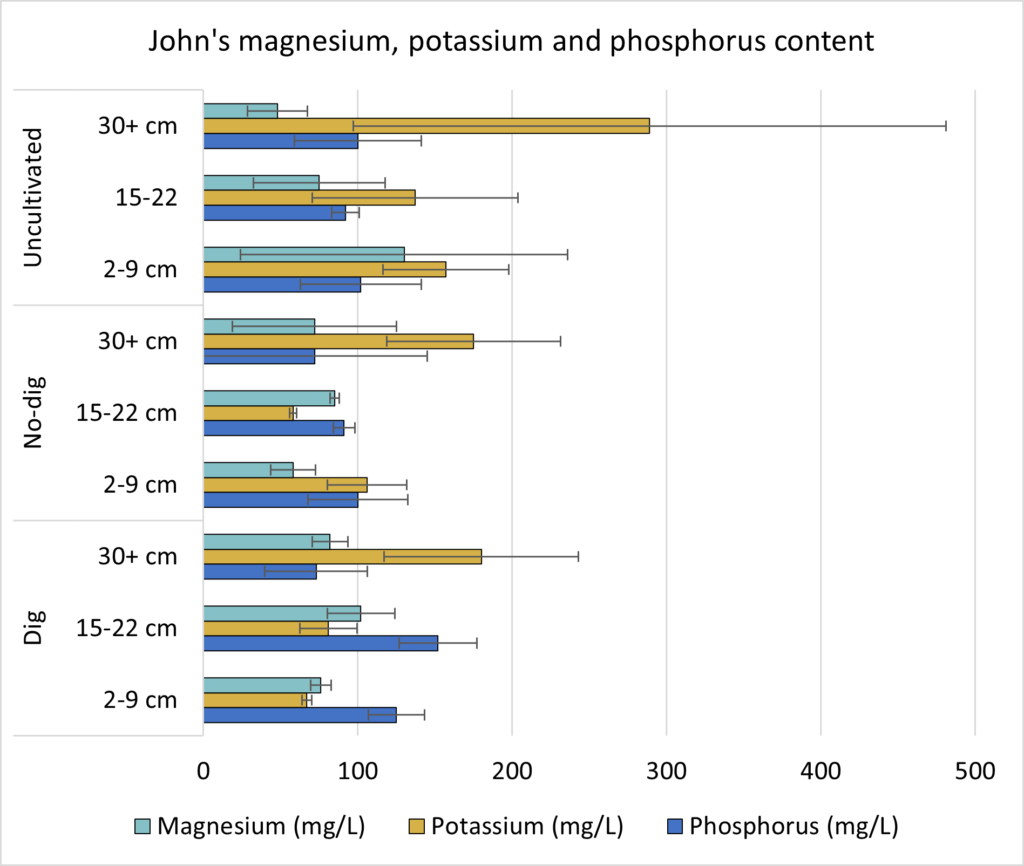Here are some tips and comments from John at Slopefield

Background
John and his wife are in their 6th food growing season at Slopefield. They use a mix of dig and no-dig methods, with no-dig beds in place since 2019. When they first got the site it resembled a building site and required a lot of work. They used an idea from a demonstration site at the Royal Botanic Garden in Edinburgh which features grass walkways between beds. The grass is good for walking on the site in wet weather and John believes it is beneficial for attracting earthworms.
Produce
John grows over 20 types of food plants including brassicas, legumes, alliums, currents, salads and tree fruit. Overall, he has found all of his plants to continually produce a successful harvest, bar a bad season for berries caused by a late frost and some disappointing pear crops. The worst thing for John is a glut, as there is only so much you can eat, freeze or give to friends.
John did research on heritage varieties of apples, pears and berries which grow well in North East Scotland before buying, but most of his plants are more generic.
Soil and allotment maintenance
A healthy soil to John is one which is viable, not saturated in moisture, not too sticky, and has a fibrous quality. He believes the soil feels good, being neither too sandy nor too clayey. No deliberate attempts are made to alter the pH, although they apply lime when planting brassicas to prevent club root.
As vegetarians, John and his wife don’t use animal products such as manure, but have found good alternatives. They make their own compost from allotment and garden clippings, left over plot vegetation, and kitchen waste. This is used a a mulch on apples, pears and soft fruit. On other beds, they use granulated seaweed and green manure such as vetch, rye grass and beans. They apply this to three beds per year on a rotation basis. The green manure appears to have been successful, although it’s unclear to John how much of the success can be attributed to this. They also use Growmore for potatoes and brassicas.
John adopted a no-dig practice in some beds after reading about the benefits of soil ecosystems. Pest control is achieved through physical barriers, with micromesh for carrot fly, and netting for pigeons and cabbage moths. He doesn’t consider that chemical controls such as slug pellets are an option. After 6 years of growing, he still feels that there is a lot to learn.
Tips for new growers in North East Scotland
John firmly believes that it’s great to grow on an allotment because of all the advice available from experienced growers. He maintains that the local knowledge is brilliant, although you tend to get different advice from different growers. While he has found the internet to be a useful resource, he says people need to realise that there are differences at this latitude and some things just don’t grow. In particular he has found pumpkin and pears difficult in the short growing season.
Soil properties on John’s plot at Slopefield

(Error bars show standard deviation from the mean.)

litre of soil. (Error bars show standard deviation from the mean.)

Note that soil properties may be highly variable within a short distance and figures given are not representative of the whole allotment site.
Return to an overview of all the sites and people.